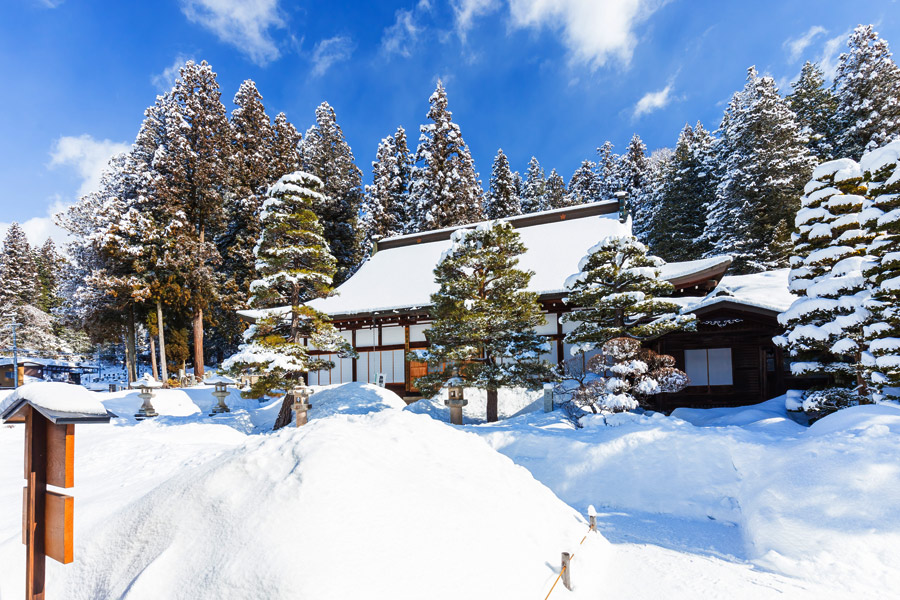[fshow photosetid=72157666522724553]
Takayama is located just a few hours north of Nagoya and is a perfect detour for those visiting Japan and wanting to experience a little more than just Tokyo and Kyoto.
Easily accessible from Nagoya, which is on the Shinkansen line between Tokyo and Kyoto, Takayama offers not only one of Japan’s most charming townscapes and beautiful natural surroundings, the town also has an impressive collection of shrines and temples just a short walk from its centre.
Hundred Year Old Noodles
Takayama’s present layout dates back to the 17th century and the town’s old merchant streets are still bustling with activity, although many of the shops now sell souvenirs to visitors. However some of the old shops and restaurants still remain, for example the highly popular Ebisu soba shop in the old part of town where the buckwheat noodles are still made daily, exactly as has been the case since the restaurant opened in 1898. Early birds might catch the owner of the restaurant folding the dough over and over before eventually cutting it into long strips using an old piece of wooden equipment as a ruler. The noodles are served either in hot or cold broth, or iced without broth on a wooden basket with sides such as tempura. It is evident the restaurant receives a lot of foreign guests – each table comes with a small guide on how to best enjoy your noodles.
Every morning, two markets invite visitors and locals alike to sample the area’s produce. The Jinya-mae Asa-ichi is located in front of Takayama-jinya, an imposing structure in the middle of the town, housing the remaining prefectural office building of the Tokugawa shogunate, while the larger Miya-gawa Asa-ichi runs along the east bank of the Miya-gawa river. Especially the latter market is well worth a visit for the spring-time strawberries or the apples in autumn. This is also a good place to sample local specialties such as mitarashi dango, which is grilled rice flour balls covered in sweet soya sauce and sometimes miso. Stalls selling another Takayama specialty, hide beef, are also well-represented.
Higashiyama Walking Course
From almost everywhere in Takayama visitors are treated to beautiful views of ice-capped mountains and just a short stroll away from the city centre you will find yourself in the Shiroyama park, which is the former site of Takayama Castle and is actually more like a forest. Shiroyama is particularly beautiful during autumn when the leaves turn into hues of orange and red. From there you have a great overview of the city and the mountains in the background. Walk through the forest to arrive at the Higashiyama Teramachi, or temple district, to start the Higashiyama Walking Course.
The 3.5 kilometres walking course is well marked and takes visitors past a small rural town with more than a dozen temples and shrines. One of the more notable temples on the walk is the Unryuuji, or the Cloud Dragon Temple, which is located near the starting point of the walk. It is believed the gate tower was moved from Takayama Castle, as was the main hall. Another interesting temple on the Higashiyama walk is Soyuuji, which is located in the south of Teramachi. Part of the Rinzai Buddhist sect, the temple was built in 1632 by brothers Shigeyori Kanamori and Shigekatsu who during the Meiji Restoration helped ensure the bloodless capitulation of Edo Castle. As with anything nature-related in Japan, spring when the cherry blossom is in bloom, and autumn when the leaves turn red, are the best times to visit. During the walk you will also pass Higashiyama Hakusan Jinja, also called the White Mountain shrine, which is the oldest in Takayama, dating back to 720.
Hida Folk Village
If your cultural self hasn’t yet been satisfied, head to Hida Folk Village, an open-air museum featuring traditional houses and buildings which have been collected throughout the region and gathered here to give visitors a peak into life in rural Japan hundreds of years ago. The museum is very well-kept and provides ample information in English, and the houses show how people lived and worked in different parts of the region. Located a couple of kilometres outside of the town centre, Hida Folk Village is accessible by foot, bus and on bicycle and makes for a great half day trip.
Tips:
- For a glimpse of old Takayama head to Ebisu for lunch. The restaurant specialises in cold buckwheat noodles, soba, and dates back to 1898. http://www.takayama-ebisu.jp/emenu
- For opening hours and more information about Hida Folk Village as well as up to date information about events, see http://www.hidanosato-tpo.jp/english12.htm
- If you are travelling more than one return trip between Tokyo and Kyoto it is advisable to buy a JR Rail Pass. The passes can be tailored to your needs and run from just a few days to several weeks. A voucher for the pass is sent to your home address and you must activate the pass upon arrival in Japan. For more information, see http://www.japanrailpass.net/en/

